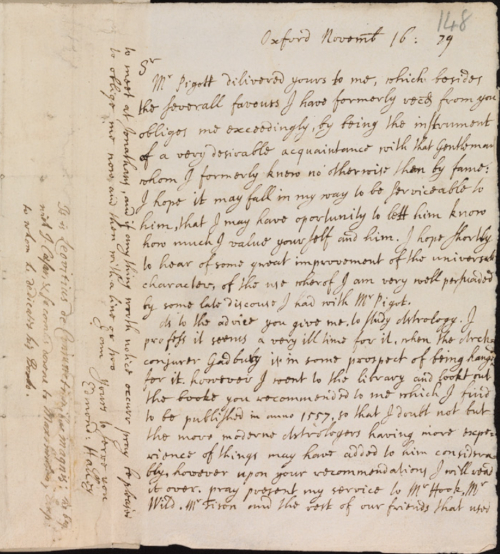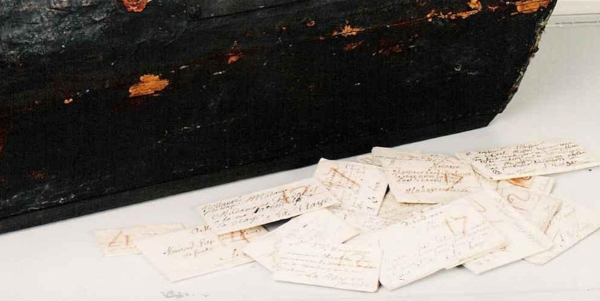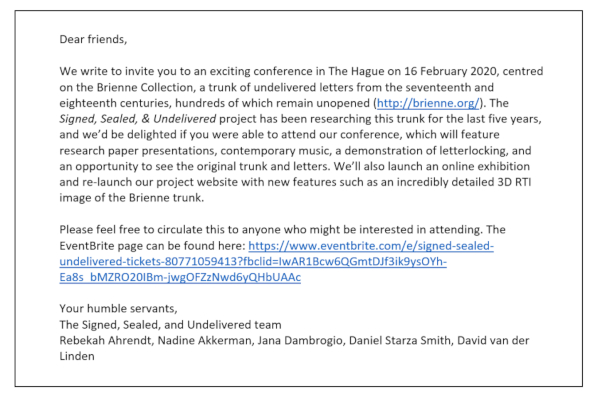As the inventory of the astronomer Edmond Halley’s correspondence is published in EMLO, my colleague Dr Philip Beeley has been working with a number of these letters as part of his ongoing research on the early Fellows of the Royal Society. In celebration of the new catalogue, Dr Beeley has provided a few ‘observations’ (although, of course, not in the astronomical sense) for this post.
It is well known that by the 1690s there was little love lost between John Flamsteed and Edmond Halley. According to the testimony of David Gregory, since 1691 Savilian professor of astronomy at Oxford and a close ally of Newton, the origin of their enmity was an act of intellectual dishonesty on Flamsteed’s part. The story goes that Halley in good faith communicated the lunar tables he had computed to the Astronomer Royal who thereupon published them as his own work and without Halley’s permission. Having heard this story from Newton himself, Gregory noted words to this effect in the margin of his copy of Principia. There can be no doubt, however, that both Halley and Newton also treated Flamsteed unfairly, most notably when they acted together to publish his new yet incomplete catalogue of the fixed stars, the Historia coelestis Britannica, without his permission in 1712.
While being an astronomer of the first order, Halley courted controversy through his attitude towards religion, and especially the established church. In 1691, when he was one of the candidates for the astronomy chair, alongside Gregory and John Caswell, his scientific qualification was by far the strongest, yet he was rejected on account of his reputation as a free-thinker or, as some would have it, his irreligion. Interestingly, however, this charge had all but evaporated by 1703, when Halley was appointed Savilian professor of geometry following the death of John Wallis.
Evidence of Halley’s free-thinking comes from his correspondence with John Aubrey. The antiquary and natural philosopher valued highly the work of his astrologer friend of many years, John Gadbury, and commended his efforts to establish a programme of astrological research as a significant contribution to the advancement of knowledge. When, in 1679, Aubrey recommended the study of astrology to Halley, the astronomer by no means rejected this proposal. Indeed, he tells Aubrey that he has gone to the library to seek out the particular book he had proposed—Leovitius’s De conjugationibus magnis—and that although not wholly convinced it would contain more than historical value he would ‘read it over’.[1. See the letter from Halley to Aubrey of 16/26 November 1679, Bodleian Libraries, MS Aubrey 42, fol. 148.] Nonetheless, Halley could not refrain from making the humorous quip that it was not perhaps the best time to be studying astrology, for Gadbury, ‘the Arch-conjurer’ as he calls him, had recently been arrested in connection with the Meat Tub Plot. And Flamsteed? He had evidently seen an unpublished ephemeris attributed to Jeremy Shakerley that was once in the hands of Gadbury and corrected by him. In contrast to Halley, Flamsteed was decidedly meek when it came to astrology. Of these tables he remarks in the manuscript history of his own life that he would not be seen with Mr. Gadbury’s book, ‘lest I should be suspected astrological’.
Philip Beeley
Faculty of History
University of Oxford



